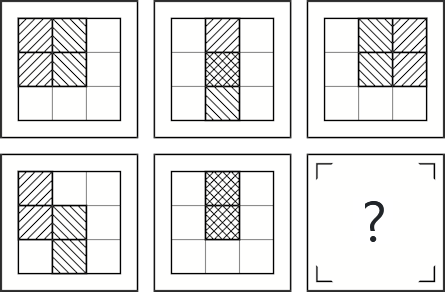With so many deadlines to beat, preparing your college application can become a scary herculean task.You may get confused and wonder, “What’s the best time to apply to college?”
If not properly informed on dates and timelines for the different stages and processes involved, one could end up very confused, running from pillar to post in a flurry of activities to catch up. Thus, they could even miss out on very important processes.
Therefore, in order not to keep you from getting overwhelmed, we have compiled all the important dates into one master list. So, you can call this your official College Application Timeline.” As a matter of fact, with this, you will know the best time to apply to college.
Hence, you can easily keep track of everything you need to take care of as you prepare for college. Also remember, if you’re going to put your best foot forward you need your head in a good, calm place.
That said, let’s buckle down as we zero in our Effiko timeline for college application. Keep reading!
READ: Choosing a College in the United States: Where Do I Start?
Breakdown of College Application Timelines
Firstly, we will begin with the ideal timeline for junior year (or S.S. 2 in the Nigerian educational system). Understanding these timelines will help you know the best time to apply to college.
| DATE | TASK |
| September | Start scouting for scholarship opportunities. While most awards will be due in your senior year, many of them have their deadlines in your junior year. So, be alert. |
| Mid- September | If you intend to take the PSAT, confirm your registration with your guidance counsellor. If your school doesn’t offer PSAT, then you may have to check out other schools in your area to arrange a test date. |
| Mid-September | If you’re taking the ACT, the registration deadline is usually around this period. |
| September | Start making your college list. You can keep going over it as the year progresses if need be. But this is the time to make the list. |
| October | This is the time you take the PSAT. Although there are usually three dates for the PSAT, it will only be taken once at your school. |
| Early October | Deadline for November SAT registration, if applicable. |
| Late October | ACT Administration |
| November | Deadline for December SAT and ACT registration. Also, be sure to go through the SAT Subject Test dates and availability and then make a schedule that accommodates the tests you intend to take. |
| Early November | SAT and ACT Administrations |
| Early December | SAT Administration |
| Mid November – March | Most summer programmes end their registration here. You should start planning immediately! |
| Mid-January | Deadline for February ACT administration. If you haven’t taken the ACT before but you intend to take it, register now. |
| Winter- Spring | Visit colleges and attend college fairs if you can fit that into your schedule. |
| Mid-February | ACT administration (but not in New York, no ACT tests are available on this date). |
| Mid-February | Deadline for the registration of March SAT. If you plan to take the SAT but haven’t already taken it, register now. |
| Before March 1 | Confirm AP registration with AP teachers, or if you are studying yourself, then confirm with AP coordinators. |
| Before March 1 | Check out the AP calendar for potential exam clashes and work with an AP coordinator to get a late-testing date if need be. |
| Early March | ACT Administration |
| Mid-March | SAT administration date. No SAT Subject Tests on this date. |
| Early April – Early May | Deadline for May and June SAT registration. As a junior, you should plan to take the SAT Subject Tests on these dates. |
| Early to Mid-May | AP Exams |
| May – June | Consider scheduling college visits now in preps for the summer. |
| End of Junior Year | Start requesting recommendations from your teachers. |
Source: Collegevine Blog
Ideal Timeline for Senior Year (S.S.S.3 in the Nigerian Education System)
Basically, this is a breakdown of the senior year timeline in Nigeria to help you know the best time to apply to college.
| DATE | TASK |
| Summer before senior year | Start scouting for scholarships. Make a list of important dates and deadlines so you can keep them in mind throughout the year. Be on the alert as many scholarships have their deadlines in October or November. |
| Late July | Deadline for registration of August SAT and SAT Subject Tests. |
| August 1 | Release of the common applications online. |
| Early August | Deadline for registration of September ACT. |
| Mid-August | Finalise your college list, and start considering Early Decision I or Early Decision II options. |
| Late August | SAT administration date |
| Early September | ACT administration date |
| Mid-September | Deadline for October ACT and SAT registration. |
| September | Start coming up with essay topics. If you’re applying for Early Decision I, start drafting your essay. |
| September 7 – October 1 | If applicable, contact an MIT Educational Counsellor to book an interview for an Early Action application. |
| October 1October 5 | Confirm recommendations from your teachers if you’re doing Early Decision I Complete the first draft of your essay for Early Decision I. Get help reviewing and editing. |
| Early October | Deadline for registration of November SAT. |
| October 12 | If applicable, complete your Naviance or Guidance counsellor brag sheet. It varies among guidance counsellors, so make sure you confirm with your guidance counsellor on time. |
| October 12 | If you’re not taking the October ACT or November SAT, then send your SAT/ACT and SAT Subject Test scores to all your early action schools. |
| October 15 | If applicable, register for a CSS profile. |
| October 15 | Complete the second draft of your essay for Early Decision I. |
| Before October 21 | Meet your Guidance Counsellor and submit any note you’d like them to include in your recommendation letter. |
| October 22 | Submit art or other supplement and/or slide room to all Early Decision I schools. |
| October 25 | Get a third party to review your final essay to make sure it’s perfect for your Early Decision I applications. |
| October 28 | Check with your teachers to be sure they’ve sent in your recommendation letters for your Early Decision I applications. |
| Late October | SAT and ACT administrations. |
| November 1 -15 | Typical deadline for Early Decision I applications. |
| November 3 -2 3 | If applicable, contact an MIT Educational Counsellor (EC) to schedule a regular decision. |
| Early November | Deadline for December ACT and SAT. This will be your last chance to send your SAT and ACT scores to Early Decision II schools. |
| Early November | SAT and ACT administrations. |
| November 10 | Complete the first draft of your essay for Early Decision II applications. |
| Before November 15 | Prepare for your Early Decision I interviews. |
| November 15 | Send Act, SAT, and SAT II scores to all UC schools and other schools with a deadline of 30th November or 1st December. |
| November 22 | Submit art or other supplement and/or slide room to all UC schools and other schools with a deadline of 30th November or 1st December. |
| November 24 | Complete second draft of an essay for Early Decision II and regular decision. |
| November 30 or December 1 | Deadline for college application at UC schools and a few others. |
| Early December | SAT and ACT administrations. This will be your last chance to send your SAT and ACT scores to your Early Decision II and regular application deadlines. |
| Mid DeDecember 10December 10 | Early Decision I decision released.Get a third party to review your essay for Early Decision II. |
| Before December 15 | Prepare for Early Decision II schools’ interviews. |
| December 15 | Send SAT/ACT, and SAT Subject Test scores to Early Decision II and all regular schools |
| Around December 20 | Deadline for rush December SAT/ACT scores for Early Decision II and regular decision application. |
| December 15 – January 1 | Typical deadline for Early Decision II application. |
| December 15 | Submit art or their supplement and/or slide room to all regular or Early Decision II schools, if applicable. |
| January 1 – February 1 | Typical deadline for regular decision application. |
| Before January 25 | Prepare for regular decision interviews. |
| January – March | Start planning for summer programs, deadlines typically occur here. |
| Before February 7 | If your regular decision schools require them, ensure that you school sends each of them your mid-year report. |
| Mid-February | Early Decision II decisions released. |
| February 20 | Complete and submit your Free Application for Federal Student Aid (FAFSA) and CSS profiles. |
| Before March 1 | Confirm your AP registration with AP teachers, if you’re studying alone, confirm with an AP coordinator. |
| Mid-March to Early April | Regular application decisions released. |
| April 15 | Write your waitlist letter, and if possible, secure a waitlist recommendation. |
| May 1 | Make final decisions on your college choice or whether you want to take a gap year. |
| Early – Mid May | AP exams |
Source: Collegevine Blog
READ: Acing Your College Interview: Tips for the Introvert
An Important Word About SAT and ACT Tests
While our focus is on the best time to apply to college, here something important you must know. It’s not certain what the future holds for SAT and ACT tests. Some colleges in the U.S. have cut them out altogether, while others are considering it. Be sure to confirm if your prospective colleges require SAT or ACT scores before paying to write either of these tests.
It’s a Wrap!
Finally, we’ve come to the end of today’s article. We hope this answers your question on the best time to apply to college. Feel free to print this page if you want to. Also, make sure you keep it handy as you begin your college application. All the best! And don’t forget to share!


